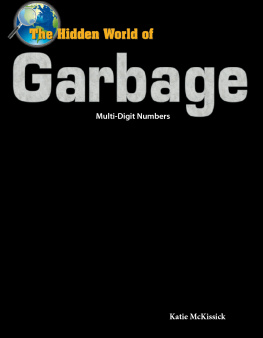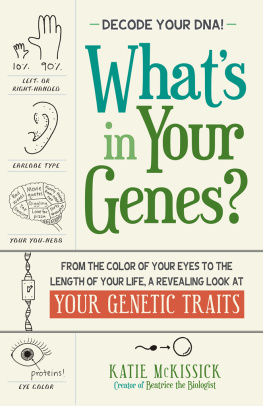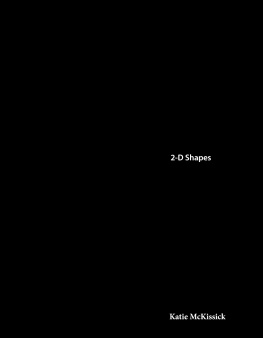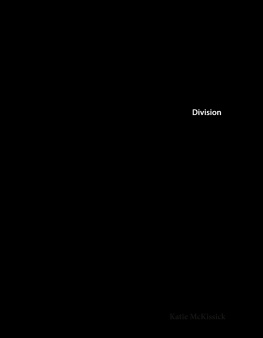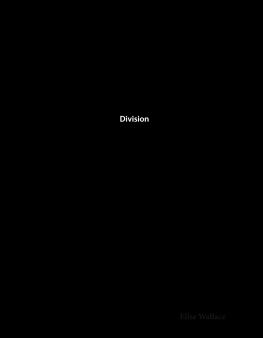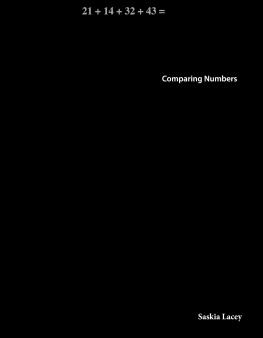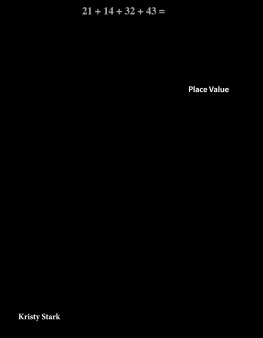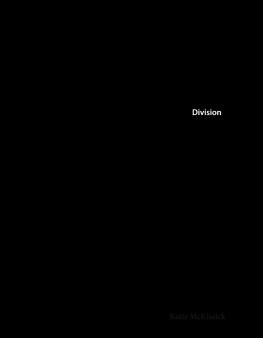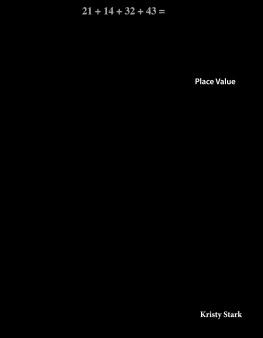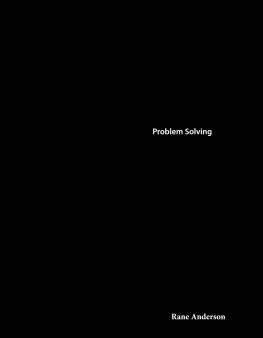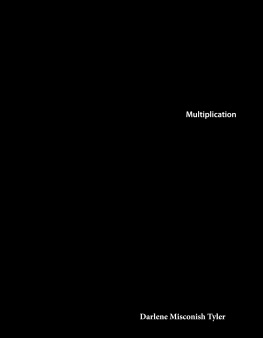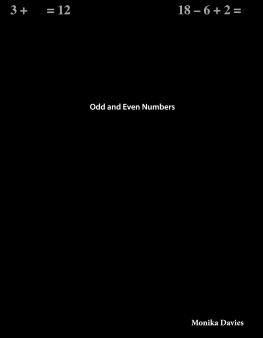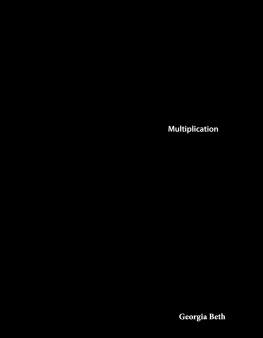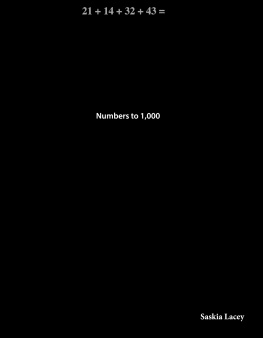Katie McKissick - The Hidden World of Garbage: Multi-Digit Numbers
Here you can read online Katie McKissick - The Hidden World of Garbage: Multi-Digit Numbers full text of the book (entire story) in english for free. Download pdf and epub, get meaning, cover and reviews about this ebook. year: 2018, publisher: Triangle Interactive, LLC, genre: Politics. Description of the work, (preface) as well as reviews are available. Best literature library LitArk.com created for fans of good reading and offers a wide selection of genres:
Romance novel
Science fiction
Adventure
Detective
Science
History
Home and family
Prose
Art
Politics
Computer
Non-fiction
Religion
Business
Children
Humor
Choose a favorite category and find really read worthwhile books. Enjoy immersion in the world of imagination, feel the emotions of the characters or learn something new for yourself, make an fascinating discovery.
- Book:The Hidden World of Garbage: Multi-Digit Numbers
- Author:
- Publisher:Triangle Interactive, LLC
- Genre:
- Year:2018
- Rating:3 / 5
- Favourites:Add to favourites
- Your mark:
- 60
- 1
- 2
- 3
- 4
- 5
The Hidden World of Garbage: Multi-Digit Numbers: summary, description and annotation
We offer to read an annotation, description, summary or preface (depends on what the author of the book "The Hidden World of Garbage: Multi-Digit Numbers" wrote himself). If you haven't found the necessary information about the book — write in the comments, we will try to find it.
The Hidden World of Garbage: Multi-Digit Numbers — read online for free the complete book (whole text) full work
Below is the text of the book, divided by pages. System saving the place of the last page read, allows you to conveniently read the book "The Hidden World of Garbage: Multi-Digit Numbers" online for free, without having to search again every time where you left off. Put a bookmark, and you can go to the page where you finished reading at any time.
Font size:
Interval:
Bookmark:
0covercover.xhtmlThe Hidden World of Garbage Multi-Digit Numbers Katie McKissickcover1page0001page0001.xhtmlMath Talk 1. How many different ways are there to write 1, 247? 2. Why is place value important when comparing numbers? 3. What strategies can be used to prove that a number has been rounded correctly? 4. How are the thousands place value and the hundreds place value related? 5. Dylan writes 423 as 42 tens and 3 ones. Is he correct? Explain your reasoning. 6. When is it important to know the exact value of a number? When is knowing an estimate enough? How are the situations different?22page0002page0002.xhtmlThe Hidden World of Garbage Multi-Digit Numbers33page0003page0003.xhtml44page0004page0004.xhtmlTable of Contents Garbage on the Brain 4 Life Cycle of Garbage 6 Visiting the Landfill 11 At the Recycling Center 16 Other Ways to Recycle 22 Making Less Garbage 26 Problem Solving 28 Glossary 30 Index 31 Answer Key 3255page0005page0005.xhtmlGarbage on the Brain Its stinky. Its smelly. Chances are, youve probably never thought much about it. Its garbage. Can you remember the last thing you threw away? Was it an apple core? Was it a napkin? Was it something that could be recycled? People might not spend hours each day thinking about trash. But, what and how things are thrown away are important. How much garbage do people make in a day, a week, or even a year? How much does a whole city, or even the whole world, throw away? The amount of garbage must be immense! What happens to it? Why doesnt garbage fill most streets? For something people dont spend a lot of time thinking about, there sure are a lot of questions about garbage!66page0006page0006.xhtml77page0007page0007.xhtmlLife Cycle of Garbage It might not seem like it, but garbage can be a big deal a very big deal. On average, one person makes about 4 pounds (2 kilograms) of garbage per day. That totals 1, 460 lbs. (662 kg) each year. Thats about how much a cow weighs! All of that garbage needs to go somewhere. Otherwise, the streets would be full of stale bread, dirty diapers, and brown apple cores. Thats where garbage collectors come in. They collect garbage with trucks. Garbage trucks have been around since the 1800s. But, how they look has changed quite a bit. They started as open-air carts hauled by horses. As carts rolled down the roads, garbage often flew out of the cart and back into the street! It wasnt until the 1920s that closed trucks made their way into common use.88page0008page0008.xhtmlGarbage trucks of today are huge, powerful machines. One truck can haul garbage from more than 800 houses. And each truck can hold more than 10 tons (9, 072 kg) of garbage! Once collected, the trash is taken to a transfer station. LET'S EXPLORE MATH On average, a person makes 122 pounds of trash in one month. How is the value of the 2 in the tens place different from the value of the 2 in the ones place? Use your understanding of place value to explain your reasoning. Garbage collectors haul away trash using a horse-drawn garbage wagon in 1946.99page0009page0009.xhtmlThe staff at the transfer station collects and sorts the garbage. First, they must unload the trucks as they come in from the local community. Some transfer stations compact garbage into a smaller size. It then gets taken away to a landfill. Other transfer stations sort garbage before compacting it. That requires more people. But, it is more eco-friendly. Many transfer stations sort items into four main groups : recycling, waste-to-energy, compost, and landfill. First, staff members group items to send to recycling centers. This garbage can be reused. Then, the workers place items into a waste-to-energy group. These items can be changed into clean energy. Next, they place old food and plants in a compost group. Compost is a mixture of discarded food and plants that farmers use to improve the soil. The rest of the items are put in a landfill group. This is where most garbage goes. Drivers move garbage at a transfer station where it will be sorted into groups.1010page0010page0010.xhtmlA man sorts paper products at a recycling center.1111page0011page0011.xhtmlA compactor flattens garbage in a landfill.1212page0012page0012.xhtmlVisiting the Landfill Over half of the garbage that gets picked up will head to a landfill. But, there is much more to a landfill than the name suggests. Gone are the days when garbage trucks would simply drop trash into a large hole and cover it with dirt. Now, landfills are built into the ground. Garbage is taken to specific areas. There may be different areas each day. A compactor drives over the new garbage until it is flat. Then, workers cover it with dirt. This helps keep odors from escaping. Once garbage is packed underground, it begins to decay. During this process, the decayed garbage releases methane gas. In some places, methane is collected and used to make electricity. Sometimes, garbage decays quickly. Plants, food, and paper all decay within a few months. Other trash takes much longer. It can take up to 1, 000 years for a single plastic bottle to break down. That is why it is best to recycle plastic. Still, many recyclables end up in landfills. LET'S EXPLORE MATH Imagine that the methane gas from one landfill can be converted into electricity to power 2, 385 homes per year. Another landfill produces enough methane gas to power 2, 435 homes per year. 1. How can place value be used to compare these numbers? Explain your thinking. 2. Write a comparison statement with the numbers using >, <, or =.1313page0013page0013.xhtmlWhat types of garbage might people find at a landfill? About one-third of the waste is packaging material. Most of this consists of corrugated cardboard. Americans discard more than 29 million tons (26 billion kg) of cardboard each year. Imagine how much corrugated cardboard is thrown away in the entire world! Most corrugated cardboard that is thrown away is recycled. Nine out of 10 pieces to be exact! But even the 1 out of 10 pieces that arent recycled add up to millions of tons of waste. New trees have to be cut down to make cardboard for the next year. In fact, over 15 million trees are cut down each year to make cardboard. And, thats just in the United States. If people all over the world stopped recycling, trees would be chopped down way too quickly to replace.1414page0014page0014.xhtmlLET'S EXPLORE MATH Suppose a garbage truck company collects 25, 376 pounds of cardboard. 1. Draw a number line and plot 25, 376. Between which two thousands does 25, 376 fall? 2. Use your number line to round 25, 376 to the nearest thousand. Trucks transport plastic and cardboard to a recycling center.1515page0015page0015.xhtmlThe Bottle House in Canada is made of 500, 000 glass bottles.1616page0016page0016.xhtmlIt is not possible to recycle some forms of waste. Paint cans, certain metals, paper containers with plastic liners, and some types of plastic are examples. But, that does not mean these items have to go straight to landfills. Some people get creative with nonrecyclables. Sometimes, people reuse common items. They may make art out of pieces of broken glass or wallets out of plastic folders. Soup cans may be made into jewelry. Plastic cups may be used as pencil cases. And soda bottles may be used to grow plants. Some people even take their reusing a step further. They turn huge tires into planters. They use milk jugs to make storage for school supplies. A house in Canada was even built with glass bottles!1717page0017page0017.xhtmlAt the Recycling Center There are many creative ways to reuse things. But, what happens when trash is recycled? Paper, plastic, and glass each go through a special process to turn into something new. Precious Paper Every year, each American recycles about 275 lbs. (125 kg) of paper. But there is still a lot of paper that ends up in landfills. Imagine if every newspaper printed in the United States were recycled. The world could save about 250 million trees per year! Now, add that to all the mail, sticky notes, and other scraps of paper people use in a year. Clearly, recycling paper can have a big impact on the environment! The types of products made from recycled paper are based on how the paper is made. Paper is made with fibers taken from trees. As it is recycled, the fibers shorten. Paper with short fibers gets made into tissue or toilet paper. Paper with long fibers gets made into printing paper. When paper is recycled, it is first chopped into small pieces. Then, its mixed with water. It turns into a mush. This sludge is spread out and dried to make new paper. It can be made into books, plates, napkins, and more.1818page0018page0018.xhtmlA machine mixes bits of paper and water to turn it into new paper. Mounds of paper are ready for recycling.1919page0019page0019.xhtmlPopular Plastic The average person uses about 125 pieces of plastic each week. In a year, that could add up to 6, 500 pieces. When all of the people in the world are considered, that much plastic could circle Earth four times! This doesnt mean that all hope is lost for a cleaner planet. People can use less plastic and save money. One way is by drinking water from reusable bottles. It costs about 700 times more to buy bottled water than it does to drink water out of the tap. That means that if a person buys a $1 bottle of water each day for a year, they would spend $365. If they were to fill a reusable bottle with tap water each day for a year, they would only spend $0. 52! Still, there might be times when using a plastic water bottle is unavoidable. In those cases, its important to recycle. Recycling bottles costs less than making new ones. And, recycling plastic helps save animals. Over a million animals are killed each year by plastic that has not been recycled. So, it is best for everyone when people recycle plastic. plastic containers2020page0020page0020.xhtmlSo what happens when plastic is recycled? Recycling centers first crush the plastic. The crushed plastic is cleaned and sorted. The sorting is based on the types of products the plastic will be turned into. Then, it is ground into flakes and washed and sorted again. Finally, its melted and turned into new things. It can be made into new bottles, pipes, chairs, and even clothes! LET'S EXPLORE MATH It is estimated that one person uses 125 pieces of plastic each week. Write 125 at least three different ways. Plastic bottles pass through a sorting machine at a recycling center. plastic flakes2121page0021page0021.xhtmlA factory worker handles hot bottles formed from recycled glass.2222page0022page0022.xhtmlGleaming Glass Unlike paper, glass can be recycled over and over without changing its structure. Its color even stays the same. So, a green glass bottle will stay a green glass bottle no matter how many times it is recycled. And it is eco-friendly to recycle glass. A glass bottle that is made today takes up to 4, 000 years to decompose. And, it can take even longer if it sits in a landfill! Workers at recycling centers use a careful process to recycle glass. First, they sort the glass by color. Then, the glass is washed and dried. Next, they smash the glass into small pieces. Then, they put it in a huge oven. As the glass heats up, it turns into a liquid. This liquid can be used to make new bottles and jars. Glass can also be used to make bricks or home goods. After people use their new glass products, they can recycle them. Then, the process starts over! crushed glass2323page0023page0023.xhtmlOther Ways to Recycle People are always looking for new ways to reduce garbage. Some people think burning trash is the answer. Other people love composting. Waste-to-Energy Plants Waste-to-energy plants are a fairly new idea in the United States. In fact, there are only about 70 in the whole country. On one side of the debate are people who are concerned about air, water, and soil pollution. On the other side of the debate are people who love the energy it creates. Each year, burned trash is used to power over a million homes! So, how does it work? waste-to-energy plant2424page0024page0024.xhtmlFirst, garbage is brought to the plants. The staff checks it to make sure that it can be used. About 85 out of every 100 things thrown away can be burned. So, most of the things they sort are fit for use. After that, the garbage is taken to a pit. A huge crane picks up trash from the pit and loads it into a combustion chamber. As the garbage burns, water turns into steam. This steam can be turned into electricity. For every 2, 000 lbs. (907 kg) of garbage burned at a plant, enough energy is formed to power 16 homes. LET'S EXPLORE MATH Factory workers at a waste-to-energy plant sort the garbage they receive in a month. The staff counts 2, 400 plastic water bottles. There are 10 times as many aluminum cans. How can you find the number of aluminum cans? Explain your reasoning. A waste-to-energy plant worker shovels trash pellets that will be burned.2525page0025page0025.xhtmlcompost2626page0026page0026.xhtmlComposting Another way people can reduce waste is by putting used food items back into the soil instead of throwing them away. Almost two-thirds of household waste can be composted. Compost is a mixture of leaves, plants, and food. These things can be put in the soil. As they decay, they help new plants and food grow. Composting is a simple process. As food and plants are added to the pile, they begin to decompose. Then, the compost becomes a fertilizer that helps to improve the quality of the soil. The new fertilizer can be spread across farms and gardens. New plants and food items can grow from the nutrient-rich soil. Some communities and schools have started composting programs. An average school creates over 3, 000 lbs. (1, 300 kg) of food waste each year. Most of it comes from the lunchroom. Instead of just throwing away banana peels and apple cores after lunch, students put them into compost piles. Schools that compost save money by not having as much garbage. And, the compost can be used in school gardens. As fruits and vegetables grow, students and teachers can grab snacks throughout the day. The uneaten remains can be put back into the compost pile!2727page0027page0027.xhtmlMaking Less Garbage People make garbage at a stunning rate. For many years, people thought burying it was the best way to go. In recent years, people have recycled more garbage than ever before. And each year, this amount continues to rise. But there is still a long way to go. Most of the garbage that is thrown away still goes straight to landfills. There are other options, though. Reusing water bottles and sorting recyclables are easy and cost-effective ways to help. Making compost piles is another way to help. With so many options available, people can choose the one that makes the most sense for them. If people all pitch in before they pitch it out, they can make a lasting impact for years to come.2828page0028page0028.xhtmlPlastic water bottles can be reused to grow vegetables.2929page0029page0029.xhtmlProblem Solving Jillian wants to start a compost pile at her school. She asks her classmates to put their old food into a special container outside the cafeteria. The students have decided to use the compost pile to grow a vegetable garden. That way, they can all have healthy snacks at school. And they might even be able to take some food home to their families. To see how large of a vegetable garden they can make, Jillian has been keeping track of all of the food items put in the compost pile in the first month. Use Jillians list to answer the questions. List of Food tems 29 watermelon rinds 157 carrot tops 238 banana peels 1, 213 apple cores3030page0030page0030.xhtml1. Write the number of carrot tops in word form and expanded form. 2. How is the value of the 3 in 238 banana peels different from the value of the 3 in 1, 213 apple cores? 3. About how many of each food item has Jillian composted so far? Draw a number line and plot each number. Then, round each number to its greatest place value. 4. Use your number line to compare the number of carrot tops with the number of banana peels. Write a comparison statement with the numbers using >, <, or =. Explain your thinking. 5. Suppose Jillian composts two thousand, four hundred seven slices of moldy bread. Write this number in at least three different ways.3131page0031page0031.xhtmlGlossary combustion a chemical reaction that produces heat compact to press something together so that it takes up less space compactor a machine that presses garbage to reduce its size compost a decayed mixture of plants and food that is reused as soil composted the process by which decayed plants and food are turned into soil corrugated a type of cardboard with many folds decay to rot or spoil decompose to break something down into its individual parts eco-friendly not harmful to the environment energy power that can be used to do something fertilizer nutrients that are added to soil from decomposing plants or animals fibers thin threads landfill an area where garbage is buried methane a gas that is released during decomposition nonrecyclables items that cannot be processed or treated for further use nutrient a substance that living things need to grow recycled the process of making a material into something new recycling the act of reusing a material or making it into something new3232page0032page0032.xhtmlIndex Canada, cardboard, compactor, compost, electricity, energy, food, garbage trucks, gardens, glass, landfill, packaging, paper, plants, plastic, recycling centers, schools, transfer stations, waste-to-energy plant,3333page0033page0033.xhtmlAnswer Key Lets Explore Math page 7 : The value of the 2 in the tens place is 10 times greater than the value of the 2 in the ones place. 2 tens (20) is 10 times greater than 2 ones (2). page 11 : 1. Since the values of the thousands places are the same in both numbers, compare the values of the hundreds places. 2, 385 has 3 hundreds and 2, 435 has 4 hundreds. 2. 2, 385 < 2, 435 or 2, 435 > 2, 385 page 13 : 1. Number lines should show 25, 376 between 25, 000 and 26, 000, but closer to 25, 000; between 25, 000 and 26, 000 2. 25, 000 page 19 : one hundred twenty-five; 100 + 20 + 5; 1 hundred, 2 tens, 5 ones; 12 tens and 5 ones page 23 : 24, 000 aluminum cans; 20, 000 is 10 times greater than 2, 000, and 4, 000 is 10 times greater than 400 Problem Solving 1. One hundred fifty-seven; 100 + 50 + 7 2. The value of 3 in 238 is 10 times greater than the value of 3 in 1, 213. 3 tens (30) is 10 times greater than 3 ones (3). 3. Watermelon rinds : 30; carrot tops : 200; banana peels : 200; apple cores : 1, 000; Number lines should show each exact number plotted near the estimates. 4. 157 < 238 or 238 > 157; 100 is less than 200 or 200 is greater than 100 5. Answers will vary, but may include : 2, 407; 2, 000 + 400 + 7; 2 thousands, 4 hundreds, 7 ones; 24 hundreds and 7 ones3434page0034page0034.xhtmlMath Talk 1 . How many different ways are there to write 1 , 247 ? 2 . Why is place value important when comparing numbers ? 3 . What strategies can be used to prove that a number has been rounded correctly ? 4 . How are the thousands place value and the hundreds place value related ? 5 . Dylan writes 423 as 42 tens and 3 ones . Is he correct ? Explain your reasoning . 6 . When is it important to know the exact value of a number ? When is knowing an estimate enough ? How are the situations different ? 3535page0035page0035.xhtmlThe Hidden World of Garbage Multi-Digit Numbers Every day, people throw away a lot of trash. Trash might include old socks, banana peels, or candy wrappers. But, have you ever thought about what happens to that trash after the garbage truck hauls it away? Take a trip to a landfill and recycling center as you explore multi-digit numbers! Operations and Algebraic Reasoning36
Next pageFont size:
Interval:
Bookmark:
Similar books «The Hidden World of Garbage: Multi-Digit Numbers»
Look at similar books to The Hidden World of Garbage: Multi-Digit Numbers. We have selected literature similar in name and meaning in the hope of providing readers with more options to find new, interesting, not yet read works.
Discussion, reviews of the book The Hidden World of Garbage: Multi-Digit Numbers and just readers' own opinions. Leave your comments, write what you think about the work, its meaning or the main characters. Specify what exactly you liked and what you didn't like, and why you think so.

